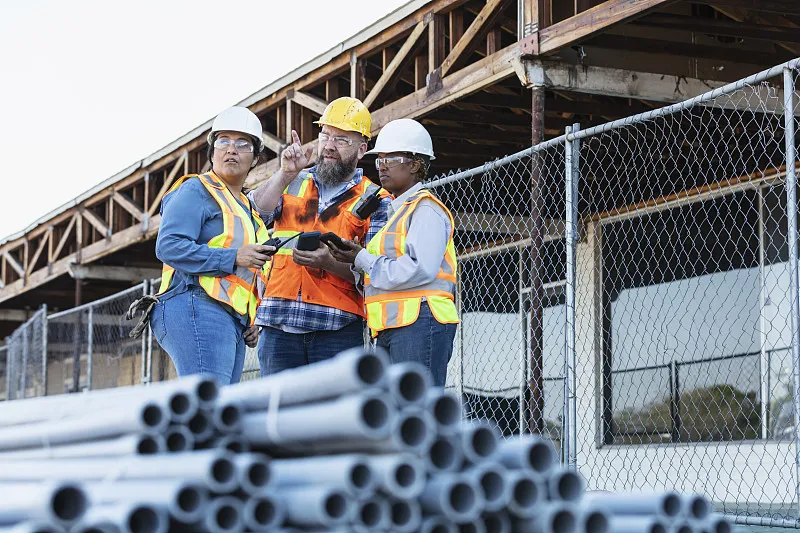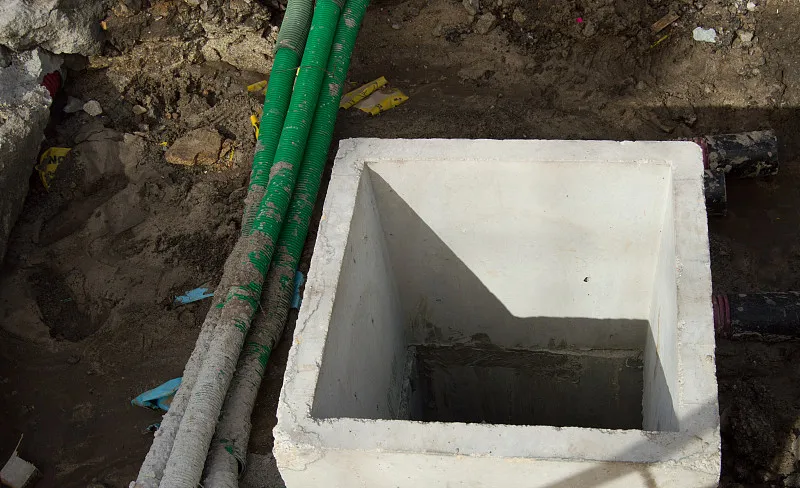Introduction PPR Pipe
PPR Pipe (Polypropylene Random Copolymer pipes) have become a popular choice for residential plumbing systems due to their excellent durability, resistance to corrosion, and cost-effectiveness. Whether you are building a new house or replacing an old plumbing system, the installation of PPR pipes can be a significant investment. For homeowners, understanding the cost involved in fitting PPR pipes is crucial for budgeting and planning.
In this article, we will explore how much it costs to fit PPR pipes inside a 5 marla house. We will break down the costs involved, the factors that influence the overall price, and how to ensure that you are getting the best value for your investment. Whether you’re building a home or renovating your existing plumbing system, this guide will help you make informed decisions about installing PPR pipes.
What Is a 5 Marla House?
In many countries, especially in South Asia, a “marla” is a unit of area used in land measurement. One marla is typically equivalent to 272.25 square feet. Therefore, a 5 marla house covers an area of approximately 1,361.25 square feet. This size is common for small, single-story homes, typically found in urban or suburban areas.
For plumbing purposes, a 5 marla house usually includes the following components:
- A few bathrooms (typically 2 to 3)
- A kitchen
- A laundry area
- Water supply for gardens or other outdoor spaces
Given the modest size of a 5 marla house, installing PPR pipes can be relatively straightforward and cost-effective, depending on various factors such as the layout, number of fixtures, and the complexity of the installation.
Factors Affecting the Cost of Fitting PPR Pipe
The cost of fitting PPR pipes in a 5 marla house can vary widely based on several factors. Below are some key considerations that influence the overall cost of installation:
1. Material Quality and Type of PPR Pipe
Not all PPR pipes are created equal, and the price of PPR pipes can vary significantly depending on their quality and manufacturer. There are different grades of PPR pipes available in the market, including standard and high-performance versions.
- Standard PPR Pipes: These are more affordable and can handle typical residential water systems.
- High-Performance PPR Pipes: These pipes are designed to withstand higher temperatures, pressure, and more demanding applications. They are more expensive than standard options but offer greater durability.
For a 5 marla house, a homeowner may choose standard-grade PPR pipes for typical applications like cold and hot water supply, which can reduce costs. However, if the house requires specialized systems (e.g., underfloor heating), high-performance pipes might be necessary.
2. Pipe Diameter and Length
The cost of fitting PPR pipes will depend on the total length of pipe required and the diameter of the pipes. The larger the diameter of the pipes, the higher the cost, as thicker pipes require more material and are more expensive.
- Standard Pipe Sizes: For residential plumbing, PPR pipes usually come in sizes ranging from 20mm to 110mm in diameter. The most commonly used sizes for a 5 marla house are 25mm, 32mm, and 40mm, depending on the application.
- Total Length: The total length of PPR pipes required for a 5 marla house can range from 200 feet to 300 feet, depending on the complexity of the plumbing layout.
The total length of piping required will depend on the number of bathrooms, the kitchen, and any additional water fixtures.
3. Labor Costs
Labor costs can be a significant part of the overall installation cost. The complexity of the installation, the skill level of the plumbers, and the region where the house is located will all affect the labor charges.
- Installation Time: A simple installation in a 5 marla house with a basic plumbing system might take around 3-5 days, while a more complex system (e.g., with underfloor heating or complex pipe routing) could take up to a week.
- Plumber’s Hourly Rate: In many regions, plumbing rates are charged per hour or per day. For example, in South Asia, hourly rates can range from $5 to $15 per hour, depending on the area and the plumber’s experience.
4. Additional Costs for Fittings and Accessories
In addition to the PPR pipes, other materials such as fittings, valves, connectors, elbows, and tees are necessary for the installation. These fittings are essential for ensuring a leak-proof and efficient plumbing system.
- Fittings: These can include elbows, tees, reducers, and couplings, which are required to connect the pipes to fixtures and other systems.
- Valves: Stop valves and pressure-regulating valves are needed for controlling the water flow and pressure within the system.
- Insulation: In areas where temperature fluctuations are extreme, pipe insulation may be required to prevent the pipes from freezing or overheating.
While fittings and accessories are generally affordable, they can still add up when multiplied across multiple sections of the plumbing system in the house.
5. Location and Regional Price Differences
The cost of installing PPR pipes can also vary depending on where you live. Labor costs and material prices tend to be higher in urban areas compared to rural areas. Additionally, transportation costs for materials and availability of PPR pipes can influence the final price.
- Urban vs. Rural: In larger cities, installation costs are typically higher due to increased demand for plumbing services and higher labor rates. Conversely, in smaller towns or rural areas, the prices may be more affordable.
- Availability of Materials: In some regions, PPR pipes may be less readily available, requiring higher transportation or import fees, which can drive up costs.

Estimating the Total Cost for Fitting PPR Pipe in a 5 Marla House
To provide a more concrete idea of the cost involved, let’s break down a rough estimate of what you might expect to pay for fitting PPR pipes in a 5 marla house.
Materials Cost
- PPR Pipe: The cost of PPR pipes typically ranges from $0.50 to $1.50 per foot, depending on the quality and diameter of the pipe. For a 5 marla house, you might need between 200 to 300 feet of piping.
- Estimated Cost: $100 to $450 for PPR pipes.
- Fittings and Accessories: Fittings, valves, and other accessories might cost an additional 10-15% of the total material cost.
- Estimated Cost: $50 to $150 for fittings and accessories.
Labor Costs
Labor costs can vary widely depending on your location and the complexity of the installation. Assuming an average plumber’s hourly rate of $10 per hour and 3-5 days of work for a basic installation, the labor cost would be:
- Estimated Cost: $300 to $600 for labor.
Total Estimated Cost
Based on the above estimates, the total cost of fitting PPR pipes in a 5 marla house can range from:
- Low End: $450 to $600 for basic materials and installation.
- High End: $750 to $1,200 for higher-quality pipes, fittings, and labor.
These estimates can vary based on location, the quality of materials chosen, and the complexity of the installation. It’s always best to get multiple quotes from local plumbers or plumbing companies to ensure that you are getting the best value.
How to Save on PPR Pipe Installation Costs
While PPR pipes are already a cost-effective solution for residential plumbing, there are a few strategies you can use to reduce installation costs:
- DIY Installation: If you have basic plumbing skills, you can save on labor costs by handling part of the installation yourself. However, this requires a solid understanding of plumbing and pipe fitting.
- Buy Materials in Bulk: Purchasing PPR pipes and fittings in bulk can sometimes result in a lower cost per unit. Consider buying from local wholesalers or suppliers to get the best deal.
- Choose Standard-Grade Pipes: If you don’t require high-performance pipes for your home, opt for standard-grade PPR pipes, which are more affordable and still highly durable.
- Compare Quotes: Always get quotes from at least three different plumbing companies or contractors. Comparing prices and services will help you find the best deal for your project.
Conclusion
Fitting PPR pipes in a 5 marla house is an affordable and efficient option for residential plumbing. With prices ranging from $450 to $1,200, depending on the quality of materials and labor rates in your area, PPR pipes offer great value for money when compared to other plumbing solutions. The installation of PPR pipes provides long-lasting benefits, such as reduced maintenance costs, corrosion resistance, and energy efficiency.
By understanding the factors that affect the cost of PPR pipe installation, you can make informed decisions and plan your budget accordingly. Whether you’re building a new house or upgrading an existing plumbing system, PPR pipes are a smart choice for both quality and affordability.
Frequently Asked Questions (FAQ)
- How long do PPR pipes last?
- PPR pipes typically last for 50 years or more with proper installation and maintenance, making them a durable and cost-effective option for plumbing.
- Can I install PPR pipes myself?
- If you have basic plumbing knowledge, you may be able to install PPR pipes yourself. However, for complex systems or to ensure proper installation, hiring a professional plumber is recommende.
- Are PPR pipes suitable for hot water?
- Yes, PPR pipes are resistant to high temperatures and can be used for both hot and cold water applications.
- How much PPR pipe do I need for a 5 marla house?
- The total length of PPR pipe required for a 5 marla house typically ranges between 200 to 300 feet, depending on the plumbing layout.
- What is the cost difference between PPR and PVC pipes?
- PPR pipes tend to be more expensive than PVC pipes, but they offer better durability, higher temperature resistance, and greater longevity, making them a better long-term investment.


















